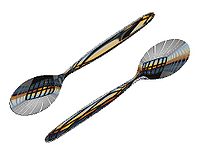Environment mapping

Imagine you're inside a room with a big mirror on one wall. When you look at the mirror, you see not just yourself, but also everything else in the room reflected back to you.
Now imagine if you wanted to create a computer game where the player could move through a realistic looking environment like a forest or a city. But it's too hard to create every single detail of the environment so that it looks real. So instead, you can create a 3D model of the environment, and then use something called environment mapping to create reflections and shadows that make it look more realistic.
Environment mapping works just like the mirror in the room. The 3D environment model is wrapped around a sphere or cube, just like the walls of a room. Then, pictures of the environment (or even just colors and lights) are taken from different angles and mapped onto each side of the sphere/cube. These pictures then create a distorted copy of the environment on the surface of the sphere/cube, making it look like the surface is reflecting the environment around it.
When the player moves through the virtual environment, the computer updates the reflection and shadow images in real-time, making it seem like the environment is changing and responding to the player's movements. This is how environment mapping makes video games and other virtual worlds look more realistic and immersive.
Now imagine if you wanted to create a computer game where the player could move through a realistic looking environment like a forest or a city. But it's too hard to create every single detail of the environment so that it looks real. So instead, you can create a 3D model of the environment, and then use something called environment mapping to create reflections and shadows that make it look more realistic.
Environment mapping works just like the mirror in the room. The 3D environment model is wrapped around a sphere or cube, just like the walls of a room. Then, pictures of the environment (or even just colors and lights) are taken from different angles and mapped onto each side of the sphere/cube. These pictures then create a distorted copy of the environment on the surface of the sphere/cube, making it look like the surface is reflecting the environment around it.
When the player moves through the virtual environment, the computer updates the reflection and shadow images in real-time, making it seem like the environment is changing and responding to the player's movements. This is how environment mapping makes video games and other virtual worlds look more realistic and immersive.
Related topics others have asked about:
